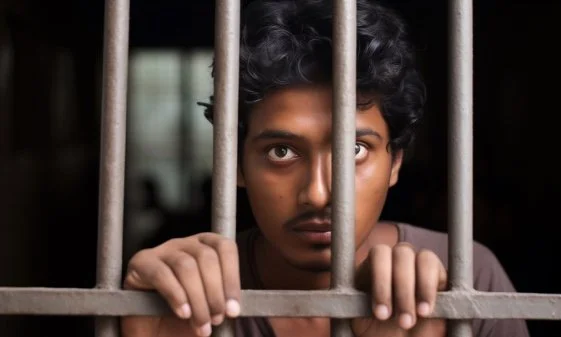3 in 4 Prisoners in India are Undertrials, Mostly Poor and Marginalised
IndiaSpend Cites Data Showing Judicial Delays, Bias Against the Young, Poor, Lower Castes
October 18, 2025
Over 500,000 people are currently locked up in Indian prisons. Nearly three-fourths of them are undertrials, people who have not been convicted of any crime, as noted by IndiaSpend. Most are poor, young and come from historically disadvantaged castes. The question is not how many, but why they are still there, and who keeps them there.
IndiaSpend, citing 2023 data from the National Crime Records Bureau, reports that 74 percent of prisoners in India are undertrials. This is only a slight drop from 76 percent in 2022. The proportion remains high and shows no sign of meaningful change.
The same pattern holds true for women. Nearly three-fourths of women in prison are also undertrials. Their presence, however, is not matched by basic infrastructure.
Women prisoners are spread thin across a system not built to hold them. Out of more than 1,300 prisons in India, only 35 are women’s jails. Just one in five women prisoners is actually housed in those facilities. In the last five years, the number of women inmates has gone up by 32 percent. The increase in capacity has not kept pace.
Almost half of all undertrials are between the ages of 18 and 30. This share has remained steady for over 10 years. Most of these young prisoners have not completed school. Many are illiterate or come from families that have no stable income.
Caste is another clear pattern. Two-thirds of undertrials come from Scheduled Castes (SC), Scheduled Tribes (ST) and Other Backward Classes (OBC). These groups own less land, have less access to education and face long-term economic and social disadvantage. In several states, including Uttar Pradesh, Bihar and Delhi, their share of the prison population is higher than their share in the general population.
Many undertrials live in overcrowded barracks, sleep on the floor and share toilets with dozens of others. Basic medical help is often missing. People with fever or injuries wait for days to see a doctor. Food is limited and sometimes unfit to eat. Undertrials are sometimes kept with convicts, though the law says they should not be. They get little help with their legal cases and often do not know when they will next be taken to court. Beatings and abuse are reported but rarely investigated. Most leave prison in worse condition than they entered.
The unchanged ratio of undertrials to convicts shows that the structural imbalance persists.
Responsibility lies with the institutions of the criminal justice system. The police, the lower courts and the state all contribute to the problem. No single group fixes it, and none are held to account.
Police make arrests quickly, often without strong evidence. Courts then keep people in custody for long periods. The state continues to expand prison capacity rather than reduce the number of those sent to prison in the first place. The result is a system where delay replaces justice. The legal principle of innocent until proven guilty does not function as promised.
The judiciary plays a large role. Magistrates often treat bail as optional rather than as a legal right. Many are cautious about granting bail because they do not want to be blamed if the accused fails to appear in court. Bail is often denied unless the accused can pay or provide sureties. For the poor, this is not possible. As a result, people remain in prison for months or even years over minor offences.
The Under Trial Review Committees were meant to reduce these cases. They include judges, police officers and legal aid officials. They identify prisoners who should be released. But their recommendations are not binding on courts. More than half of those identified for release still remain in prison.
The police contribute through selective targeting. They arrest people from SCs, STs and OBCs more often than others. These groups have fewer resources and cannot defend themselves. Poor investigations and routine arrests add to the problem.
The people in prison did not create this system. The problem lies with a criminal justice process that values control over fairness. It continues to punish poverty, youth and caste instead of ensuring justice.
You have just read a News Briefing by Newsreel Asia, written to cut through the noise and present a single story for the day that matters to you. Certain briefings, based on media reports, seek to keep readers informed about events across India, others offer a perspective rooted in humanitarian concerns and some provide our own exclusive reporting. We encourage you to read the News Briefing each day. Our objective is to help you become not just an informed citizen, but an engaged and responsible one.

